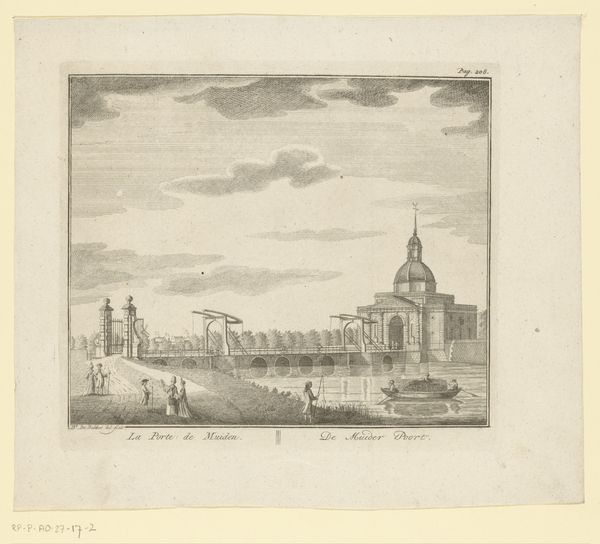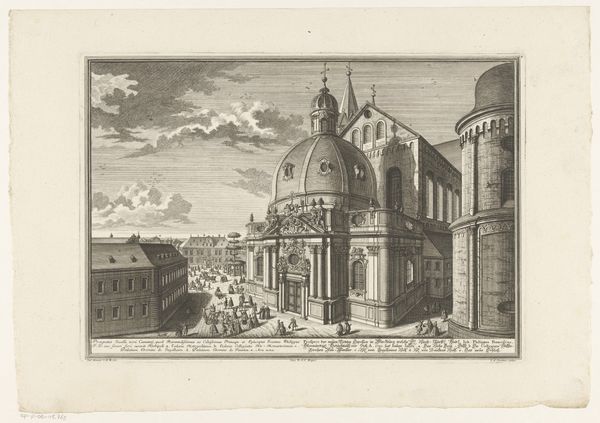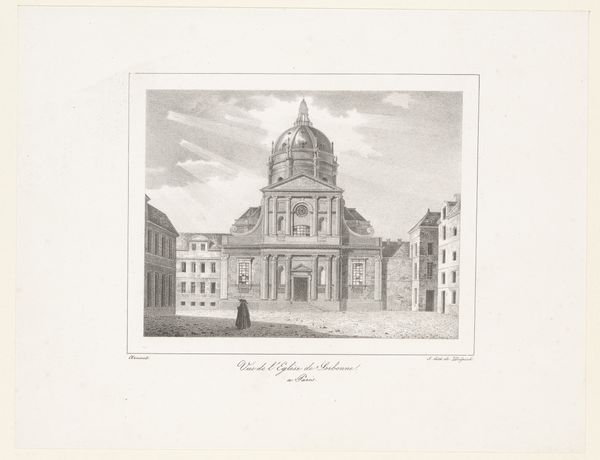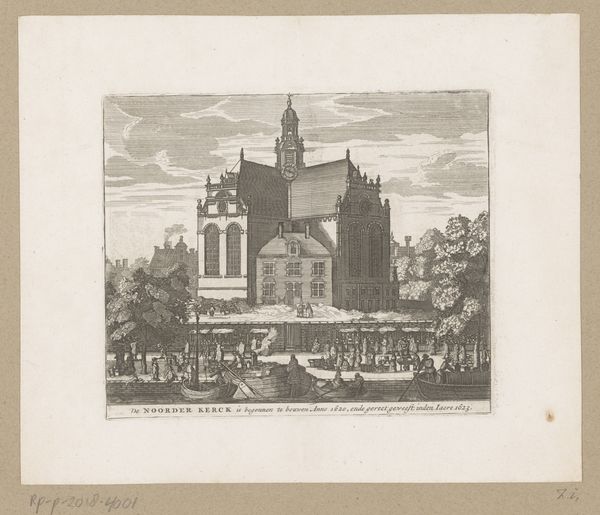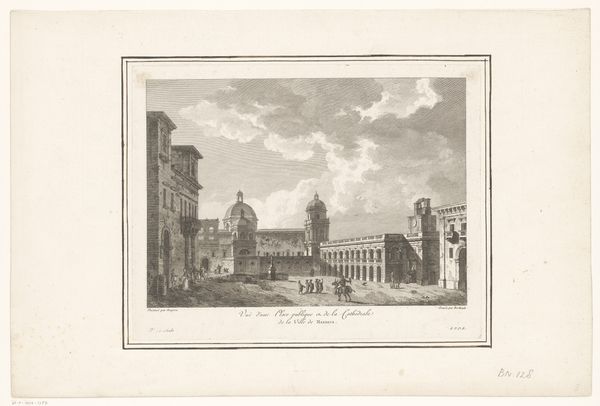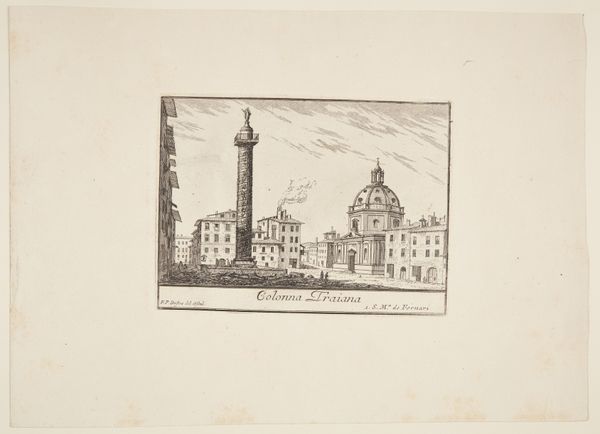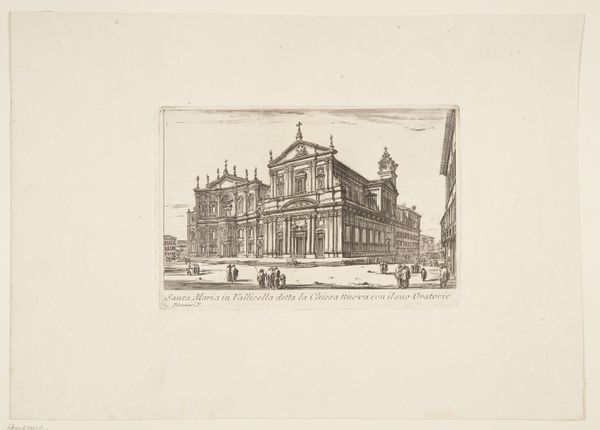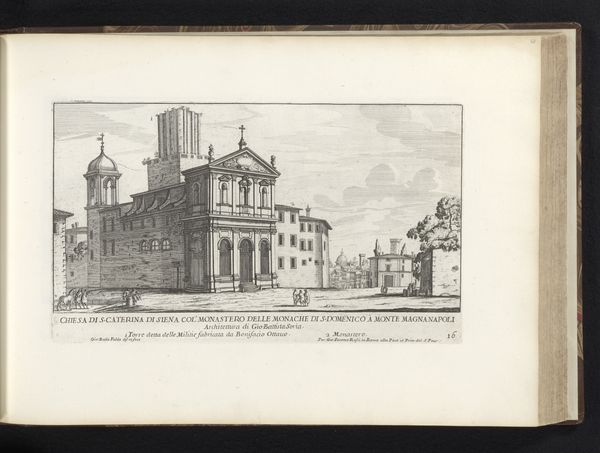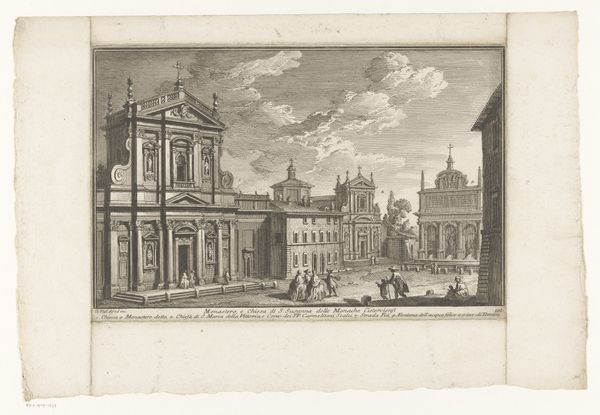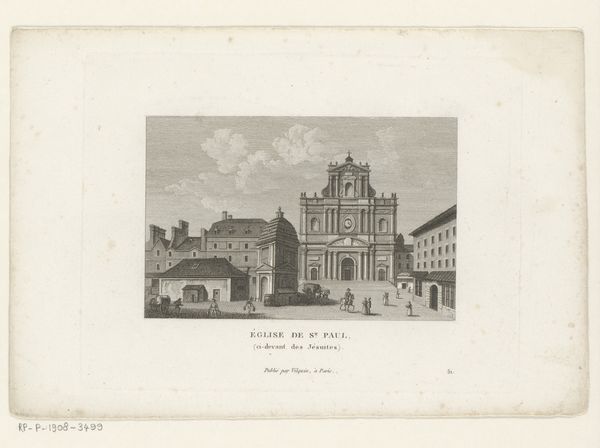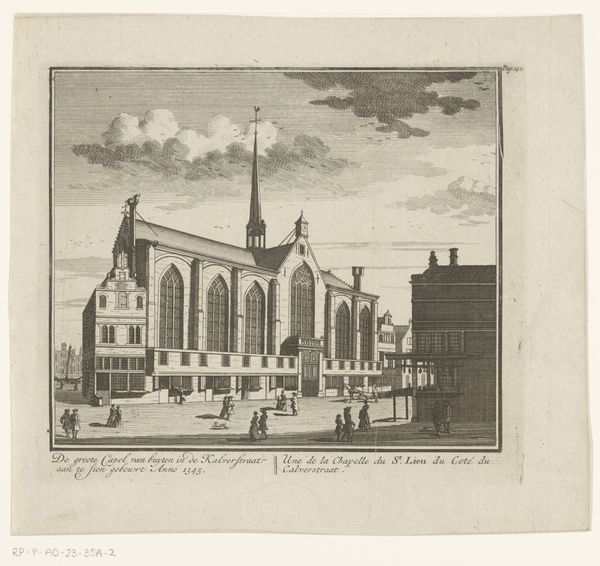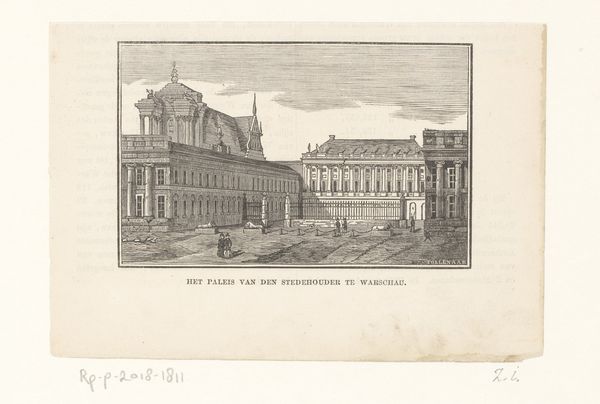
print, engraving, architecture
#
neoclacissism
# print
#
landscape
#
line
#
cityscape
#
italian-renaissance
#
engraving
#
architecture
Dimensions: height 159 mm, width 210 mm
Copyright: Rijks Museum: Open Domain
Curator: Before us, we have "Gezicht op de Kathedraal van Florence" by Giuseppe Molini, likely created between 1790 and 1856. This print captures a detailed cityscape. What's your immediate take? Editor: The stillness is what strikes me first. Even with figures present, there’s a sense of solemn grandeur, as if the cathedral dwarfs all human activity around it, creating an eternal echo of cultural memory. Curator: That's perceptive. Consider the period—Neoclassicism's focus on order and reason. Molini offers not just a depiction of a physical space but a symbolic representation of civic identity anchored in that cultural continuity. The print form democratizes the image but it subtly reinforces established social hierarchies with the church looming. Editor: Precisely. The dome becomes almost a mental icon, distilled through generations of artisans, worshippers, and even revolutionaries. Its impact extends far beyond the religious, embodying communal values. Curator: Look at the details: the lines meticulously render every stone, while the shadow and light play emphasizes form over emotion. Even in a bustling city scene, Molini gives us something eternal in this contrast. There's a clear lineage drawn, through the Italian Renaissance to the neoclassical, reflecting ideas about power and social legitimacy. Editor: Indeed, one reads an evolution reflected here. The Duomo acts as an anchor for these changes, silently reminding those within it of its legacy. The linear perspective almost drills it into your consciousness. Curator: Yet the very act of creating and distributing this image is, in itself, an expression of power relations. It raises important questions about who controls narratives. Molini seems complicit by emphasizing established interpretations rather than encouraging dissent or inviting dialogue from varied positions. Editor: Right. Every choice to render a shadow here, a line there, shapes our reception of that place, imbuing this cityscape with intention beyond pure visual replication. Thank you. It's inspiring how we see the intersectionality that buildings take within people’s lives and society. Curator: It really highlights that even in what might appear as a neutral city view, there is social intention.
Comments
No comments
Be the first to comment and join the conversation on the ultimate creative platform.

